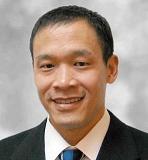Tutorials
June 20th
Multi-Dimensional Context-Aware Adaptation for Web Applications full-day from 9.00 to 17.30 (Coffee Breaks at 10.30 and 15.30 and Lunch at 12.30)
Jean Vanderdonckt and Vivian Genaro Motti
Presenters:
 Jean Vanderdonckt is a professor in Computer Science at Université
catholique de Louvain (Belgium), Louvain School of Management (IAG-LSM)
where he leads the Louvain Interaction Laboratory (LILAB). LILAB members
conduct research, development, and consulting services in the domain of
user interface engineering, a domain that is located midway between
software engineering, human-computer interaction, and usability
engineering. Jean Vanderdonckt is the founder and the coordinator of the
UsiXML Consortium (www.usixml.org) that structures activities towards the
definition and the usage of UsiXML (User Interface eXtensible Markup
Language) as a common User Interface Description Language. He is the
coordinator of HCI activities within the Similar network of excellence
(www.similar.cc), The European research taskforce creating human-machine
interfaces SIMILAR to human-human communication), and the scientific
coordinator of the ITEA2 Call3 UsiXML project. He is also a founding
member of the European COST n°294 Action MAUSE (www.cost294.org) on
usability engineering and the next one called TwinTide. He represents
Belgium for the ISO 24744 standard. He is a Senior member of IEEE, ACM,
SIGCHI. He and the BCHI team has co-authored and edited several books and
published more than 100 publications in the fields of software engineering
and HCI.
Jean Vanderdonckt is a professor in Computer Science at Université
catholique de Louvain (Belgium), Louvain School of Management (IAG-LSM)
where he leads the Louvain Interaction Laboratory (LILAB). LILAB members
conduct research, development, and consulting services in the domain of
user interface engineering, a domain that is located midway between
software engineering, human-computer interaction, and usability
engineering. Jean Vanderdonckt is the founder and the coordinator of the
UsiXML Consortium (www.usixml.org) that structures activities towards the
definition and the usage of UsiXML (User Interface eXtensible Markup
Language) as a common User Interface Description Language. He is the
coordinator of HCI activities within the Similar network of excellence
(www.similar.cc), The European research taskforce creating human-machine
interfaces SIMILAR to human-human communication), and the scientific
coordinator of the ITEA2 Call3 UsiXML project. He is also a founding
member of the European COST n°294 Action MAUSE (www.cost294.org) on
usability engineering and the next one called TwinTide. He represents
Belgium for the ISO 24744 standard. He is a Senior member of IEEE, ACM,
SIGCHI. He and the BCHI team has co-authored and edited several books and
published more than 100 publications in the fields of software engineering
and HCI.
 Vivian Genaro Motti is a PhD Candidate at Université catholique de Louvain
and a member of Louvain Interaction LAboratory (LILAB) where she
researches about user interface adaptation in context-aware applications.
She is a research assistant for Serenoa Project. She obtained her Master
degree at University of Sao Paulo (ICMC – Sao Carlos, SP, Brazil) in 2009.
There she investigated usability issues in ubiquitous computing using
user-centered design techniques. She has teaching experience in
Hypermedia, Human-Computer Interaction, and Web Technologies. She
published papers in EICS, ACM Symposium on Document Engineering (DocEng),
EuroITV, WebMedia. Her experience as a researcher include topics such as:
web 2.0, mashups, ubiquitous computing, usability, and accessibility.
Vivian Genaro Motti is a PhD Candidate at Université catholique de Louvain
and a member of Louvain Interaction LAboratory (LILAB) where she
researches about user interface adaptation in context-aware applications.
She is a research assistant for Serenoa Project. She obtained her Master
degree at University of Sao Paulo (ICMC – Sao Carlos, SP, Brazil) in 2009.
There she investigated usability issues in ubiquitous computing using
user-centered design techniques. She has teaching experience in
Hypermedia, Human-Computer Interaction, and Web Technologies. She
published papers in EICS, ACM Symposium on Document Engineering (DocEng),
EuroITV, WebMedia. Her experience as a researcher include topics such as:
web 2.0, mashups, ubiquitous computing, usability, and accessibility.
Abstract. Most of the web applications developed nowadays consider a
pre-defined context of use: an able-bodied user in a stable environment
using a Desktop PC. However, the context of use varies, users compose a
heterogeneous group, with different profiles, wishes and requirements,
they interact from different platforms and using different modalities.
Therefore, implementing a web application taking into account a specific
context of use may difficult or even prevent the user interaction, and
implementing different versions of the application for each context of use
requires significant efforts. In order to improve the usability,
accessibility and to accommodate different scenarios of use the
applications can be adapted. Adaptation consists in transforming certain
aspects of an application in different levels according to the context of
use. Many efforts have been reported in both domains of research and
development aiming to support the development of adaptive or adaptable
applications. These efforts are wide spread, therefore it is a hard task
to find unified and consistent knowledge that joins information about
adaptation in an efficient way to support its implementation. The main
goal of this tutorial is to present an overview of the state of the art of
adaptation for web interfaces concerning multi‐dimensionality and
context‐awareness. The specific goals include: (i) the presentation of
fundamental concepts, such as: what is adaptation, relevant context
information for adaptation and how to consider it to implement context
aware adaptive and adaptable applications for web, multi‐dimensions for
adaptation; (ii) the presentation of techniques currently used to adapt
web applications, as well as, the methods, models and user‐interface
languages in this domain; (iii) the presentation of adaptive and adaptable
web applications to illustrate: the context‐awareness and multi‐dimension
adaptation in practice.
Engineering the Personal Social Semantic Web half-day afternoon from 14.00 to 17.30 (Coffee Break at 15.30)
Fabian Abel and Geert-Jan Houben
Presenters:
Fabian Abel is working as postdoc in the Web Information Systems group
at Delft University of Technology. His research focuses on user modeling and
personalization in the Social Web. Fabian did his PhD work at L3S Research
Center and was concerned with (distributed) user modeling on the Social Se-
mantic Web covering topics like linking, integrating and enriching user models
as well as personalized retrieval of social media content (thesis: "Contextualiza-
tion, User Modeling and Personalization in the Social Web"). He published more
than 40 scientific articles in the field of Social and Semantic Web. In 2010, he
co-organized different workshops related to user modeling and personalization
on the Social Web like LUPAS at ESWC or UDISW at IUI. In 2011, Fabian continues these efforts and is co-organizing the workshop on User Profile
Data on the Social Semantic Web (UWeb) at ESWC 2011 and guest editor of a
special issue on the "The Personal and Social Semantic Web" for the Semantic
Web Journal.
Geert-Jan Houben, full professor at Delft University of Technology, is expert in Web-based information systems engineering and Semantic Web technology,
and author of over 100 scientific publications in the areas of Web engineering
and user-adaptation. He is heading the Hera research program on Web infor-
mation systems, adaptation & personalization, Web query and transformation
languages, and SemanticWeb technologies. He (co-) organized, chaired, or served
as PC member for numerous conferences and workshops in the field (including
more than 10 workshops related to personalization and (Semantic) Web), was
PC Chair for UMAP, and serves as editorial board member or managing editor
for journals in the area, e.g. for ACM TWEB and JWE.
Abstract. Social Web sites, such as Facebook, YouTube, Delicious,
Flickr and Wikipedia, and numerous other Web applications, such as
Google and Amazon, rely on implicitly or explicitly collected data about
their users and their activities to provide personalized content and services.
As these applications become more and more connected on the
Semantic Web, a major challenge is to allow various applications to exchange,
reuse, and integrate the user data from different sources. Such
data comes in different avors: user data such as user profiles, social
networking/tagging/blogging data, etc. as well as usage data like clickthrough
data or query logs. The amount of user data available on the
Web is tremendously growing so that sharing and mining these heterogeneous
data corpora distributed on the Web is a non-trivial problem
that poses several challenges to the Web engineering community.
In this tutorial we discuss how we can engineer the Personal Social Semantic Web,
a Web where user modeling and personalization is featured
across system boundaries. Therefore, we learn user modeling and personalization
techniques for Social Web systems. We dive into social tagging,
social networking and micro-blogging services and examine appropriate
modeling and mining techniques for these systems. We discuss Semantic
Web and Linked Data principles that allow for linkage and alignment of
distributed user data and show how we can exploit the Social Semantic
Web to personalize user experiences. This tutorial is composed of four
modules: (i) user modeling, (ii) personalization, (iii) linkage and alignment
and (iv) Personal Social Semantic Web. In each module we give
an overview of related work and recent trends, discuss selected models,
algorithms and techniques in detail and provide various hands-on coding
examples.
June 21st
Automating the Use of Web APIs through Lightweight Semantics full-day from 9.00 to 17.30 (Coffee Breaks at 10.30 and 15.30 and Lunch at 12.30)
Carlos Pedrinaci, Maria Maleshkova, Guillermo Álvaro Rey and Dong Liu
Presenters:
Dr. Carlos Pedrinaci is a research fellow of the Knowledge Media Institute at
the Open University. He holds an MSc in Computer Science and a PhD in
Artificial Intelligence from the University of the Basque Country (Spain).
Carlos has published over 50 papers in major conferences and international journals around Semantic Web Services, Knowledge-Based Systems,
Knowledge Engineering and Business Process Analysis. Carlos has worked
in several international research projects in the area of services such as
OBELIX (EU FP5 STREP), DIP (EU FP6 IP), SUPER (EU FP6 IP) and
SOA4All (EU FP7 IP). Dr. Pedrinaci has presented several tutorials on
Semantic Web Services and their application to enterprises in major
conferences such as ICSC 2008, ESWC 2007, ISWC 2007, ICIW 2007. He
has also co-organised summer schools notably the Service and Software
Architectures, Infrastructures and Engineering (SSAIE) 2009 and 2010.
Maria Maleshkova is a PhD student focusing on supporting and enhancing
the creation of semantic annotations over Web services. She holds a Dipl.-
Inform. from the University of Karlsruhe (TH), Germany, and has previously
been involved in the organization of the International Semantic Web
Conference in 2008 and the Beyond SAWSDL workshop 2009. Maria has
been a co-organiser and a lecturer at several conference tutorials, including
the Service and Software Architectures, Infrastructures and Engineering
(SSAIE) Summer School in 2009 and 2010 and the 1st Karlsruhe Summer
School on Service Research 2010.
Guillermo Álvaro Rey is a senior researcher at iSOCO in Madrid, Spain. He
holds a degree in Telecommunications Engineering from the Technical
University of Madrid (UPM) and he also obtained a M.Sc. by Research in the
Distributed Systems Group of Trinity College Dublin (TCD). In 2008, after
three years of work in a project at the Research and Development division of
Telefónica (Telefónica I+D), he joined iSOCO to work in areas such as
Semantic Web Services and Web 2.0.
Dr. Dong Liu is currently working as a research associate in the Knowledge
Media Institute, The Open University. He holds a Ph.D. in computer science
from Beijing University of Posts and Telecommunications (China). He has
been involved in the several EU-funded research projects such as SUPER
and SOA4All. His research interests include semantic Web service and
Linked Data.
Abstract. Web services have already achieved a solid level of acceptance
and play a major role for the rapid development of loosely-coupled
component-based systems, overcoming heterogeneity within and
between enterprises. Current developments in the world of services on the
Web are marked by the proliferation of Web APIs and Web applications,
commonly referred to as RESTful services, which show high potential and
growing user acceptance. Still, despite the achieved progress, the wider
adoption of Web APIs is hindered by the fact that their implementation and
publication hardly follow any standard guidelines or formats. REST principles
are indeed a good step in this direction but the vast majority of the APIs do
not strictly adhere to these principles. As a consequence, in order to use
them, developers are obliged to manually locate, retrieve, read and interpret
heterogeneous documentation, and subsequently develop custom tailored
software, which has a very low level of reusability. In summary, most tasks
during the life-cycle of services require extensive manual effort and
applications based on existing Web APIs suffer from a lack of automation.
This tutorial introduces an approach and a set of integrated methods and tools
to address this drawback, making services more accessible to both experts
and non-expert users, by increasing the level of automation provided during
common service tasks, such as the discovery of Web APIs, their composition
and their invocation. The tutorial covers i) the conceptual underpinnings,
which integrate Web APIs with state of the art technologies from the Web of
Data and Semantic Web Services; ii) the presentation of an integrated suite of
Web-based tools supporting service users; iii) and hands-on examples
illustrating how the tools and technologies presented can help users in finding
and exploiting existing Web APIs.
Improving Quality in Use of Web Applications in a Systematic Way half-day morning from 9.00 to 12.30 (Coffee Break at 10.30)
Luis Olsina and Philip Lew
Presenters:
 Luis Olsina is a full Professor in the Engineering School at the National University of La Pampa,
Argentina, and heads the Software and Web Engineering R&D group (GIDIS_Web). His research interests
include Web engineering, particularly, Web quality assurance strategies, quantitative evaluation methods,
quality improvement, and ontologies. He earned a PhD in the area of software engineering and a MSE
from National University of La Plata, Argentina. In the last 14 years, he has published over 80 refereed
papers, and participated in numerous regional and international events both as program committee chair
and member. Particularly, he co-chaired the Web Engineering Workshop held in USA in the framework of
ICSE 2002 (Int’l Conference on Software Engineering); the ICWE 2002 congress (held in Argentina) and
ICWE 2003 (held in Spain); in addition to LA-Web 2005 and 2008 editions and the WE track at
WWW’06 (held in Edinburgh, UK). He has been an invited speaker at several conferences and
professional meetings, and presented tutorials, for instance, at ICWE’05 (Int’l Conference on Web
Engineering held in Australia), ICWE’09 (held in Spain), CEESEC’10 (held in Moscow) and graduate
courses in different countries. Recently, Luis and his colleagues have co-edited the book titled Web
Engineering: Modelling and Implementing Web Applications published by Springer, HCIS Series, 2008.
Luis Olsina is a full Professor in the Engineering School at the National University of La Pampa,
Argentina, and heads the Software and Web Engineering R&D group (GIDIS_Web). His research interests
include Web engineering, particularly, Web quality assurance strategies, quantitative evaluation methods,
quality improvement, and ontologies. He earned a PhD in the area of software engineering and a MSE
from National University of La Plata, Argentina. In the last 14 years, he has published over 80 refereed
papers, and participated in numerous regional and international events both as program committee chair
and member. Particularly, he co-chaired the Web Engineering Workshop held in USA in the framework of
ICSE 2002 (Int’l Conference on Software Engineering); the ICWE 2002 congress (held in Argentina) and
ICWE 2003 (held in Spain); in addition to LA-Web 2005 and 2008 editions and the WE track at
WWW’06 (held in Edinburgh, UK). He has been an invited speaker at several conferences and
professional meetings, and presented tutorials, for instance, at ICWE’05 (Int’l Conference on Web
Engineering held in Australia), ICWE’09 (held in Spain), CEESEC’10 (held in Moscow) and graduate
courses in different countries. Recently, Luis and his colleagues have co-edited the book titled Web
Engineering: Modelling and Implementing Web Applications published by Springer, HCIS Series, 2008.
 Philip Lew is a Professor at the Software School at Beihang University where he teaches Software
Quality Assurance. He is also the CEO of XBOSoft, a firm dedicated to providing software quality
assurance and testing services. He frequently speaks and provides guidance to private enterprises in the
area of test process improvement, software quality metrics, risk-based testing strategies, and test
automation. His research interests include software improvement methods, measurement and evaluation of
software learnability, usability and user experience. He earned a PhD in Computer Science and
Engineering from Beihang University in Beijing, China, and a Bachelor and Master of Engineering from
Cornell University in Ithaca, New York.
Philip Lew is a Professor at the Software School at Beihang University where he teaches Software
Quality Assurance. He is also the CEO of XBOSoft, a firm dedicated to providing software quality
assurance and testing services. He frequently speaks and provides guidance to private enterprises in the
area of test process improvement, software quality metrics, risk-based testing strategies, and test
automation. His research interests include software improvement methods, measurement and evaluation of
software learnability, usability and user experience. He earned a PhD in Computer Science and
Engineering from Beihang University in Beijing, China, and a Bachelor and Master of Engineering from
Cornell University in Ithaca, New York.
Abstract. Today’s web-based applications (WebApps) containing complex business logic and sometimes critical to
operating the business, are now requiring increased focus on understanding and improving their quality. One
of the first steps to evaluate quality is to define requirements usually through quality models. The ISO 25010
standard describes one such model for general usage in specifying and evaluating software quality
requirements. However, ISO 25010 is intended as a general guideline to be adapted based on a specific
information need and context, i.e. for evaluating WebApps. In addition, some of ISO model concepts, while
founded strongly in theory, are difficult to realize in a real situation particularly when it comes to measuring
and evaluating quality in use (QinU). Therefore, WebApps and their quality evaluation has been the subject
of abundant research. However, models have been used mostly for the purpose of understanding, rather than
improving. In this tutorial, we propose utilizing a quality modeling framework to instantiate quality models
with the specific purpose to not only to understand the current situation of an entity, but also to improve it.
Our approach instantiates models for both external quality (EQ) and QinU, resulting in a requirements tree
for both followed by evaluation. In modeling terms, QinU characteristics and attributes need to be related to
EQ characteristics and attributes. That is to say, does the software’s new (and improved) version have a
positive impact on its QinU? To answer this question for WebApps, we began by first proposing to augment the ISO 25010 standard
through using the 2Q2U (Quality, Quality in use, actual Usability and User experience) modeling framework
to include information quality as a characteristic of internal/external quality because this is a critical
characteristic of WebApps. We further proposed to include learnability in use as a characteristic of usability
in use to account for the learning process and the importance of context of use during learning. Using ISO
25010 premise that the relationships ‘depends on’ and ‘influences’ exist between EQ and QinU, we
instantiate models for both EQ and QinU specifically for the purpose of improving the QinU of a WebApp.
To carry ISO 25010 further, we show a cyclic strategy for improvement and development of relationships.
Improving is driven by understanding these relationships, namely, ‘depends on’, and ‘influences’ in
alignment with the ISO 25010 quality life cycle model. This is illustrated with a case study showing the
underlying strategy from model instantiation to application improvement.